
Why Your Succulent Died Overnight and How to Prevent It
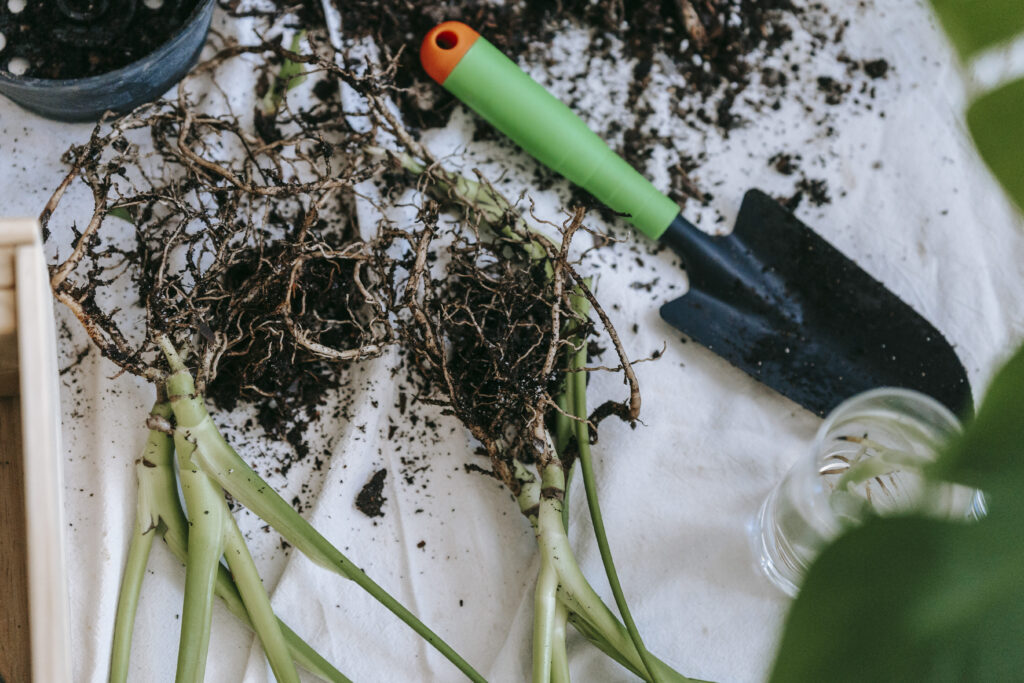
Succulents have become increasingly popular in recent years as houseplants due to their unique appearance and low maintenance requirements. These plants, known for their fleshy leaves and ability to store water, can add a touch of greenery and beauty to any space. However, despite their reputation as hardy plants, succulents can sometimes mysteriously die overnight, leaving their owners puzzled and disappointed.
We will explore the reasons why your succulent may have died suddenly and provide tips on how to prevent it from happening again. We will discuss common mistakes that succulent owners make, such as overwatering or underwatering, improper lighting conditions, and poor soil quality. Additionally, we will explore the signs to look out for that indicate your succulent is in distress and offer guidance on how to revive a dying succulent. By understanding the needs and potential pitfalls of caring for succulents, you can ensure that your plants thrive and continue to bring joy to your home or office.
- Make sure your succulent is getting the right amount of sunlight
- Avoid overwatering your succulent
- Check for signs of pests and treat them accordingly
- Provide proper drainage for your succulent
- Use the right type of soil for your succulent
- Avoid extreme temperature changes
- Give your succulent enough space to grow
- Be careful when repotting your succulent
- Keep an eye out for signs of disease and treat them promptly
- Research the specific care needs of your succulent species
- Ensure that your succulent is receiving adequate sunlight to thrive
- Prevent your succulent from dying overnight by avoiding overwatering
- Maintain the health of your succulent by checking for and treating pests
- Promote proper drainage to prevent root rot and other issues
- Use the appropriate soil type for your succulent's needs
- Protect your succulent from extreme temperature fluctuations
- Allow your succulent enough room to grow and spread its roots
- Handle repotting with care to avoid damaging the succulent
- Monitor your succulent for signs of disease and take immediate action
- Educate yourself on the specific care requirements of your succulent species
- Frequently Asked Questions
Make sure your succulent is getting the right amount of sunlight
One common reason why succulents die overnight is due to insufficient or excessive sunlight. Succulents are known for their ability to thrive in bright, sunny conditions, but it's important to find the right balance.
When it comes to sunlight, succulents generally require at least 6 hours of direct sunlight each day. This allows them to photosynthesize and produce the energy they need to grow. However, too much direct sunlight can lead to sunburn or scorching, causing the leaves to turn brown or yellow and eventually die.
On the other hand, if your succulent is not receiving enough sunlight, it may start to stretch or elongate in an attempt to find more light. This phenomenon is known as etiolation and can weaken the plant, making it more susceptible to disease and other issues.
To prevent your succulent from dying overnight due to sunlight-related problems, it's crucial to find the right spot for it. Ideally, place your succulent in a location where it can receive bright, indirect sunlight for most of the day. If you're unsure about the lighting conditions in your home, consider using a light meter to measure the intensity of the light.
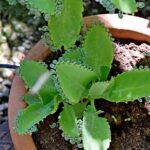 Are Mother of Thousands Succulents Toxic to Pets?
Are Mother of Thousands Succulents Toxic to Pets?Remember to monitor your succulent's response to sunlight and make adjustments as necessary. If you notice signs of sunburn or stretching, consider moving your succulent to a shadier spot or providing some shade during the hottest parts of the day.
Proper sunlight exposure is essential for the health and survival of your succulent. Finding the right balance between too much and too little sunlight will ensure that your succulent thrives and doesn't die overnight.
Avoid overwatering your succulent
One of the most common reasons why succulents die overnight is due to overwatering. Succulents are desert plants that have adapted to survive in dry conditions, so they are not accustomed to excessive moisture. When you water your succulent too frequently or give it too much water at once, the roots become saturated, leading to root rot and ultimately the death of the plant.
To prevent overwatering, it's important to understand the watering needs of your succulent. Most succulents prefer a "soak and dry" method, where you thoroughly water the plant and allow the soil to completely dry out between waterings. This mimics the natural rainfall patterns in their native habitats.
When watering your succulent, make sure to use well-draining soil that allows excess water to escape easily. Avoid using potting soil that retains too much moisture, as it can trap water around the roots and promote rot. Additionally, choose pots with drainage holes to ensure proper water drainage.
Another tip is to check the moisture level of the soil before watering. Stick your finger about an inch into the soil, and if it feels dry, then it's time to water. If the soil is still moist, wait a few more days before watering again.
Remember, overwatering is one of the most common mistakes made by succulent owners, so be mindful of your watering habits to prevent the sudden death of your beloved plants.
 Identifying Root Rot: Spotting Unhealthy and Healthy Roots
Identifying Root Rot: Spotting Unhealthy and Healthy RootsCheck for signs of pests and treat them accordingly
One common reason why succulents may suddenly die overnight is the presence of pests. These tiny creatures can quickly infest your plants and cause significant damage if left untreated. It's important to regularly inspect your succulents for any signs of pest infestation.
Some common pests that can affect succulents are aphids, mealybugs, and spider mites. These pests can suck the sap out of the plants, leading to wilting, discoloration, and eventually death. If you notice any sticky residue, tiny webs, or small crawling insects on your succulents, it's a clear indication of a pest problem.
To treat pest infestations, you can start by physically removing the pests using a cotton swab dipped in rubbing alcohol. Be sure to target both the adults and the eggs to prevent further infestation. For larger infestations, you may need to resort to insecticidal soap or neem oil. These natural remedies are effective in controlling pests while being safe for your succulents.
Preventive measures:
- Quarantine new plants: Before introducing new succulents to your existing collection, keep them separate for a few weeks to ensure they are pest-free.
- Regularly inspect your succulents: Take the time to examine your plants for any signs of pests, especially on the undersides of leaves and in the crevices.
- Maintain proper hygiene: Remove any fallen leaves or debris around your succulents, as they can attract pests and provide hiding spots.
- Use well-draining soil: Pests are more likely to infest succulents in overly moist conditions. Ensure your succulents are potted in well-draining soil to prevent excess water retention.
- Avoid over-fertilizing: Too much fertilizer can weaken succulents, making them more susceptible to pests. Follow the recommended dosage and frequency for fertilization.
By being proactive in pest prevention and promptly treating any infestations, you can significantly reduce the risk of your succulents dying overnight due to pest damage.
Provide proper drainage for your succulent
 Managing White Fuzz on Succulents: Causes and Solutions
Managing White Fuzz on Succulents: Causes and SolutionsOne of the most common reasons why succulents die overnight is due to improper drainage. Succulents thrive in well-draining soil, and if excess water is not able to escape, it can lead to root rot and ultimately the death of your plant.
To provide proper drainage for your succulent, make sure to use a pot with drainage holes. This allows excess water to seep out, preventing it from sitting in the soil and suffocating the roots. Additionally, you can add a layer of pebbles or small rocks at the bottom of the pot to further enhance drainage.
Another important aspect of drainage is the choice of soil. Succulents prefer a well-draining soil mix that consists of a combination of gritty materials such as perlite, sand, or pumice. This type of soil allows water to flow through easily, preventing waterlogged conditions that can be fatal to your succulent.
Remember to water your succulent sparingly and only when the top inch of the soil feels dry. Overwatering is a common mistake that succulent owners make, and it can quickly lead to the death of your plant. Always err on the side of underwatering rather than overwatering, as succulents are highly adapted to survive in arid conditions.
Key takeaways:
- Ensure your succulent has proper drainage by using a pot with drainage holes.
- Add a layer of pebbles or rocks at the bottom of the pot to aid in drainage.
- Use a well-draining soil mix consisting of gritty materials.
- Water your succulent sparingly and only when the top inch of soil is dry.
Use the right type of soil for your succulent
When it comes to keeping your succulents alive and thriving, one of the most important factors to consider is the type of soil you use. Succulents have unique needs when it comes to soil composition, and using the wrong type of soil can quickly lead to their demise.
First and foremost, it's crucial to choose a well-draining soil for your succulents. These plants are native to arid regions where water is scarce, so they have adapted to survive in sandy or gritty soils that allow water to quickly drain away. Using regular potting soil or garden soil, which tends to retain moisture, can lead to root rot and ultimately the death of your succulent.
 Ant-Free Succulents: Effective Ways to Eliminate Ants
Ant-Free Succulents: Effective Ways to Eliminate AntsInstead, opt for a specialized succulent or cactus soil mix, which is specifically formulated to provide the ideal drainage and aeration for these plants. These mixes typically consist of a blend of materials such as sand, perlite, and peat moss, which help to create a loose and well-draining environment for the roots.
Another option is to create your own succulent soil mix. A popular recipe includes equal parts of regular potting soil, coarse sand, and perlite. This DIY approach allows you to customize the soil mix to suit the specific needs of your succulents.
Remember to always use a well-draining pot or container with drainage holes to further ensure proper soil drainage. This will prevent excess water from pooling at the bottom of the pot and suffocating the roots.
In summary:
- Choose a well-draining soil specifically formulated for succulents or create your own mix.
- Avoid using regular potting soil or garden soil, as they retain too much moisture.
- Use a well-draining pot or container with drainage holes to prevent water from pooling.
By using the right type of soil and ensuring proper drainage, you can significantly increase the chances of your succulents thriving and avoid the heartbreaking experience of losing them overnight.
Avoid extreme temperature changes
One of the main reasons why your succulent may have died overnight is due to extreme temperature changes. Succulents are known for their ability to thrive in arid and dry conditions, but they are not fans of sudden temperature fluctuations.
 Signs of a Dying Succulent: Understanding Leaf Loss
Signs of a Dying Succulent: Understanding Leaf LossWhen the temperature changes too rapidly, it can cause stress to the plant and disrupt its delicate balance. Succulents prefer a stable and consistent environment, so it's essential to provide them with the right conditions.
To prevent your succulent from experiencing extreme temperature changes, here are a few tips:
- Choose an appropriate location: Place your succulent in an area where it won't be exposed to direct sunlight or drafts. Avoid placing it near windows or doors that are frequently opened and closed.
- Consider indoor vs. outdoor: If you live in an area with extreme temperature variations, you might want to consider keeping your succulent indoors. This way, you can regulate the temperature and protect it from sudden changes.
- Monitor temperature fluctuations: Keep an eye on the temperature in the area where your succulent is located. Use a thermometer or a smartphone app to track the temperature and ensure it stays within the optimal range for your specific succulent species.
By following these precautions, you can help prevent your succulent from suffering from sudden temperature changes and increase its chances of thriving.
Give your succulent enough space to grow
One of the most common reasons why succulents die overnight is because they don't have enough space to grow. Succulents are known for their ability to store water in their leaves, stems, and roots, but they still need room to spread out and thrive.
When planting succulents, make sure to give them enough space between each plant. This will allow air circulation and prevent overcrowding, which can lead to the development of diseases and pests. Additionally, overcrowded succulents may compete for resources like sunlight and water, which can weaken them and make them more susceptible to damage.
If you notice that your succulent is outgrowing its current container, it's time to repot it. Choose a pot that is slightly larger than the current one and fill it with well-draining soil specifically designed for succulents. This will provide your succulent with the space it needs to grow and thrive.
Remember, giving your succulent enough space to grow is essential for its overall health and longevity.
 Can Succulents Trigger Allergies in Certain Individuals?
Can Succulents Trigger Allergies in Certain Individuals?Be careful when repotting your succulent
Repotting your succulent may seem like a simple task, but it's important to approach it with caution. Improper repotting techniques can cause stress to your succulent, leading to its untimely demise. Follow these tips to ensure a successful repotting process:
Choose the right pot and soil
When selecting a new pot for your succulent, make sure it has drainage holes to prevent water from pooling at the bottom. Succulents prefer well-draining soil, so opt for a specialized succulent or cactus mix. Avoid using regular potting soil, as it retains too much moisture and can lead to root rot.
Handle with care
When removing your succulent from its old pot, handle it gently to avoid causing damage to the roots or stems. Use a pair of clean, sterilized scissors or pruning shears to carefully trim any dead or rotting roots. Be mindful not to remove too many healthy roots, as they are essential for the succulent's survival.
Allow the roots to dry
After removing the succulent from its old pot, it's important to let the roots dry and callus over before planting it in the new pot. This process helps prevent root rot and allows the plant to establish itself in its new environment more effectively. Place the succulent in a shaded spot for a few days to allow the roots to dry completely.
Plant with proper spacing
When planting your succulent in its new pot, ensure that you leave enough space between each plant. Overcrowding can lead to increased moisture retention, which can be detrimental to the succulent's health. Aim to provide adequate airflow and room for growth, allowing your succulent to thrive.
Water sparingly
After repotting your succulent, it's crucial to adjust your watering routine. Succulents are drought-tolerant plants and prefer infrequent watering. Overwatering can lead to root rot and other water-related issues. Wait until the soil is completely dry before watering again, and always water at the base of the plant to avoid wetting the leaves.
 Protecting Your Garden: Understanding if Rabbits Will Eat Succulents
Protecting Your Garden: Understanding if Rabbits Will Eat SucculentsBy following these repotting tips, you can ensure that your succulent remains healthy and thriving. Remember to always monitor your plant's specific needs and adjust your care routine accordingly. With proper care, your succulent will continue to bring beauty and joy to your space for years to come.
Keep an eye out for signs of disease and treat them promptly
One of the main reasons why succulents may die overnight is due to the presence of diseases. These diseases can spread rapidly and cause irreversible damage to your beloved plants. It is essential to keep a vigilant eye out for any signs of disease and take immediate action to prevent further harm.
Here are some common signs of succulent diseases to watch out for:
- Black spots or lesions: If you notice black spots or lesions on the leaves or stems of your succulent, it could indicate a fungal or bacterial infection.
- Soft, mushy spots: Soft and mushy spots on your succulent are a sign of rot, usually caused by overwatering or poor drainage.
- Wilting or drooping leaves: Wilting or drooping leaves can be a symptom of various diseases or environmental stressors. Examine the leaves closely to identify the underlying cause.
- Discoloration: Yellowing, browning, or unusual discoloration of the leaves can be an indication of nutrient deficiencies, pests, or diseases.
- Stunted growth: If your succulent is not growing as it should or appears stunted compared to other healthy plants, it may be suffering from a disease.
If you notice any of these signs, it is crucial to take immediate action to prevent the disease from spreading and causing further damage. Here are some steps you can take to treat succulent diseases:
- Isolate the affected plant: Remove the diseased succulent from other healthy plants to prevent the spread of the disease.
- Trim affected areas: Carefully trim off any infected or damaged parts of the succulent using sterile pruning tools. Dispose of the trimmed sections properly.
- Treat with appropriate fungicides or pesticides: Depending on the specific disease, apply the recommended fungicides or pesticides to the affected plant as per the instructions provided.
- Adjust care practices: Review your watering, sunlight, and fertilization practices to ensure you are providing the optimal conditions for your succulent's recovery.
- Monitor closely: Keep a close eye on the plant's progress and continue treatment until the disease is completely eradicated.
By promptly addressing signs of disease and implementing proper treatment, you can save your succulent from an untimely demise. Remember, prevention is key, so maintaining good plant hygiene, providing adequate care, and regularly inspecting your succulents can help prevent diseases in the first place.
Research the specific care needs of your succulent species
 Causes of Death Blooms in Succulent Plants: A Comprehensive Analysis
Causes of Death Blooms in Succulent Plants: A Comprehensive AnalysisIt is crucial to understand that not all succulents have the same care requirements. Each species has its own preferences for sunlight, watering frequency, and soil type. To ensure the well-being of your succulent, take the time to research and familiarize yourself with the specific care needs of the species you own.
Consider the following factors:
- Sunlight: Some succulents thrive in direct sunlight, while others prefer partial or filtered sunlight. Make sure you place your succulent in an area that receives the appropriate amount of light for its species.
- Watering: Overwatering is one of the most common reasons why succulents die. Succulents store water in their leaves, stems, or roots, allowing them to survive in dry conditions. It is essential to avoid overwatering and provide adequate drainage for your succulent.
- Soil: Succulents require well-draining soil to prevent root rot. Using a specialized succulent or cactus mix is recommended. Avoid using regular potting soil, as it retains too much moisture.
- Temperature: Succulents generally prefer warm temperatures but can tolerate a range of climates. However, extreme cold or heat can be detrimental to their health. Ensure that your succulent is not exposed to freezing temperatures or extreme heat for prolonged periods.
Signs of an unhealthy succulent:
- Yellowing or wilting leaves: If your succulent's leaves are turning yellow or becoming soft and droopy, it may be a sign of overwatering or inadequate sunlight.
- Root rot: Mushy, brown roots indicate root rot, usually caused by overwatering or poor drainage. If you suspect root rot, it is crucial to address the issue promptly to save your succulent.
- Pest infestation: Common pests that can affect succulents include mealybugs, aphids, and spider mites. Keep an eye out for signs of pests, such as webbing, tiny insects, or distorted leaves.
- Stretched out or leggy growth: Succulents usually have compact and sturdy growth. If your succulent is stretching out or becoming leggy, it may indicate insufficient light.
By understanding the specific care needs of your succulent species and being attentive to signs of distress, you can prevent your succulent from dying overnight. Remember to provide the right amount of sunlight, water sparingly, use well-draining soil, and keep an eye out for any signs of trouble. With proper care, your succulent will thrive and bring you joy for years to come!
Ensure that your succulent is receiving adequate sunlight to thrive
One of the most common reasons why succulents die overnight is due to a lack of adequate sunlight. Succulents are desert plants that thrive in bright light conditions. Without enough sunlight, they may not be able to perform photosynthesis effectively, leading to weak and unhealthy growth.
To prevent this from happening, it is crucial to ensure that your succulent is placed in a location where it can receive at least six hours of indirect sunlight every day. This could be near a south-facing window or outdoors in a spot with partial shade. If you notice your succulent stretching or leaning towards the light, it is a clear sign that it is not receiving enough sunlight.
Additionally, avoid placing your succulent too close to a window with direct sunlight, especially during the hot summer months. The intense heat can scorch the leaves and cause irreparable damage. If you notice any signs of sunburn, such as brown or black spots on the leaves, immediately move your succulent to a more shaded area.
Remember to regularly rotate your succulent to ensure that all sides receive equal sunlight exposure. This will help promote even growth and prevent the plant from leaning towards one direction.
 Using Neem Oil for Pest Control on Succulents: A Natural Solution
Using Neem Oil for Pest Control on Succulents: A Natural SolutionPrevent your succulent from dying overnight by avoiding overwatering
One of the most common reasons why succulents die overnight is due to overwatering. Succulents are known for their ability to store water in their leaves and stems, allowing them to survive in arid conditions. However, when they are exposed to excessive amounts of water, their roots become waterlogged, leading to root rot.
Root rot occurs when the roots of a plant are constantly saturated with water, depriving them of oxygen. This lack of oxygen causes the roots to decay, making it impossible for the plant to absorb nutrients and water effectively. If left untreated, root rot can quickly kill a succulent.
To prevent overwatering, it is crucial to establish a watering routine that suits your succulent's needs. Here are some guidelines to follow:
- Check the soil moisture: Before watering, always check the moisture level of the soil. Stick your finger about an inch into the soil; if it feels dry, it's time to water. If it's still moist, wait a few more days.
- Use well-draining soil: Succulents require soil that allows excess water to drain quickly. Avoid using regular potting soil, as it tends to retain moisture. Instead, opt for a well-draining mix specifically designed for succulents.
- Water sparingly: Succulents have low water requirements due to their ability to store water. Only water when the soil is completely dry and do not let the plant sit in standing water.
- Consider the climate: Succulents in humid environments require less frequent watering compared to those in drier climates. Take into account the climate of your area when establishing a watering routine.
By following these tips, you can avoid overwatering your succulents and prevent them from dying overnight. Remember, it's better to underwater than to overwater your succulent, as they are more tolerant of drought than excess moisture.
Maintain the health of your succulent by checking for and treating pests
One of the common reasons why succulents die overnight is due to pest infestation. Pests such as mealybugs, aphids, and spider mites can wreak havoc on your succulent's health. It is crucial to regularly check your plants for any signs of these tiny intruders.
When inspecting your succulent, keep an eye out for sticky residue, webbing, tiny white cotton-like masses, or small insects crawling on the leaves or stems. These are clear indications of a pest problem that needs immediate attention.
 Identifying Scale Infestation on Succulents: A Guide for Plant Lovers
Identifying Scale Infestation on Succulents: A Guide for Plant LoversTo treat pest infestations, you can start by isolating the affected succulent to prevent the pests from spreading to other plants. You can then manually remove the pests using a cotton swab dipped in rubbing alcohol or a mixture of water and mild dish soap. Gently wipe the affected areas, ensuring that you reach all the nooks and crannies where the pests might be hiding.
Additionally, you can try using natural remedies such as neem oil or insecticidal soap to control the pests. These organic solutions are safe for your succulent and effective in eliminating the pests. Follow the instructions on the product label and apply the treatment accordingly.
Remember, prevention is always better than cure. Regularly inspecting your succulents for pests and promptly treating any infestations will help to keep them healthy and thriving.
Promote proper drainage to prevent root rot and other issues
One of the most common reasons why succulents die overnight is due to poor drainage. Succulents are native to arid regions and are adapted to survive in dry conditions. Therefore, they are highly susceptible to root rot if their roots are constantly sitting in water.
To prevent this from happening, it is crucial to ensure that your succulent is planted in well-draining soil and a pot with drainage holes. Well-draining soil allows excess water to flow out easily, preventing waterlogged conditions that can lead to root rot.
When repotting your succulent, use a mix specifically formulated for succulents or create your own by combining potting soil with perlite or coarse sand. These additives help to increase the porosity of the soil, allowing water to drain effectively.
Additionally, make sure that the pot you choose has drainage holes at the bottom. These holes allow excess water to escape, preventing it from pooling at the bottom of the pot and causing root rot.
Remember to water your succulent sparingly and only when the soil is completely dry. Overwatering is a common mistake that can quickly lead to the demise of your succulent. Stick your finger about an inch into the soil – if it feels dry, it's time to water. If it still feels moist, hold off on watering.
By promoting proper drainage and avoiding overwatering, you can help prevent root rot and ensure the longevity of your succulent.
Use the appropriate soil type for your succulent's needs
If you want your succulents to thrive, it's crucial to use the appropriate soil type for their needs. Succulents require well-draining soil that allows excess water to escape quickly, preventing root rot. Avoid using regular garden soil, as it tends to retain moisture for longer periods, which can lead to the untimely demise of your succulent.
Tip: Opt for a specialized succulent or cactus potting mix, which is easily available at garden centers or can be made at home by mixing equal parts of regular potting soil, coarse sand, and perlite.
By using the right soil mix, you provide your succulent with a solid foundation for healthy growth and prevent the risk of waterlogged roots.
Protect your succulent from extreme temperature fluctuations
One of the most common reasons why succulents die overnight is due to extreme temperature fluctuations. Succulents are known for their ability to thrive in arid conditions, but they can be very sensitive to sudden changes in temperature.
When the temperature drops too low, succulents can experience frost damage, causing their leaves to become mushy and discolored. On the other hand, when the temperature rises too high, succulents can suffer from sunburn and dehydration.
To prevent your succulent from dying overnight, it's crucial to provide a stable and suitable temperature environment. Here are some tips to help you protect your succulent:
1. Choose the right location
When it comes to succulents, location is key. Place your succulent in an area that receives plenty of bright, indirect sunlight. Avoid placing it in direct sunlight for extended periods, especially during the hottest parts of the day.
Additionally, make sure to keep your succulent away from drafty areas, such as near open windows or doors. Rapid changes in temperature caused by drafts can be detrimental to your succulent's health.
2. Provide proper insulation
If you live in an area with extreme temperature variations, consider insulating your succulent to protect it from sudden temperature changes. You can use materials like bubble wrap or frost cloth to create a barrier around your succulent.
During colder months, the insulation will help retain heat and prevent frost damage. In hotter months, it will provide shade and help regulate the temperature around your succulent.
3. Monitor temperature levels
Invest in a thermometer to keep track of the temperature in your succulent's environment. This will allow you to take necessary precautions if the temperature is becoming too extreme.
If you notice the temperature dropping significantly, consider bringing your succulent indoors or providing additional protection. Similarly, if the temperature is rising excessively, move your succulent to a cooler spot or provide shade.
Remember, succulents thrive in moderate temperatures, so it's crucial to maintain a balanced and consistent environment for their well-being.
By following these tips, you can minimize the risk of your succulent dying overnight due to extreme temperature fluctuations. Remember, prevention is key when it comes to succulent care, so be proactive in creating a suitable environment for your beloved plants.
Allow your succulent enough room to grow and spread its roots
One common reason why succulents die unexpectedly is due to lack of space for their roots to grow and spread. Succulents have shallow root systems that require ample room to expand. If you keep your succulent in a small pot or container, its roots may become cramped and restricted, leading to root rot and eventually death.
To prevent this from happening, it's important to choose a pot or container that is larger than the size of your succulent's root ball. This will provide enough space for the roots to grow and spread comfortably. Additionally, make sure the pot has drainage holes to allow excess water to escape.
When repotting your succulent, gently loosen the root ball and remove any dead or rotting roots. This will help promote healthy growth and prevent the spread of diseases. It's also a good idea to use a well-draining potting mix specifically designed for succulents, as this will prevent waterlogging and ensure proper aeration.
Remember, giving your succulent enough room to grow and spread its roots is crucial for its overall health and longevity. By providing the right conditions for root growth, you can significantly reduce the risk of your succulent dying overnight.
Handle repotting with care to avoid damaging the succulent
Repotting succulents is an essential task to ensure their overall health and longevity. However, it is crucial to handle repotting with care to avoid causing any harm to your beloved plants. Here are some tips to help you successfully repot your succulents without causing any damage:
Choose the Right Time
Timing is everything when it comes to repotting succulents. It is recommended to repot your succulent during its active growing season, which is typically in spring or early summer. During this time, your succulent will have the best chance of recovering quickly and adapting to its new pot.
Prepare the New Pot
Before repotting your succulent, make sure to choose a new pot that is slightly larger than its current one. The new pot should have drainage holes to prevent water from pooling, which can lead to root rot. Additionally, sterilize the new pot to eliminate any potential pathogens that could harm your succulent.
Gently Remove the Succulent
To remove the succulent from its current pot, gently tilt the pot on its side and tap the bottom to loosen the roots. Then, carefully slide the succulent out of the pot, holding it by the base of the plant. Be cautious not to pull on the stems or leaves, as they are delicate and easily prone to breakage.
Inspect the Roots
Once you have removed the succulent from its pot, take a moment to inspect its roots. Look for any signs of root rot, such as mushy or discolored roots. If you notice any issues, carefully trim away the affected roots using sterilized pruning shears.
Prevent Overwatering
One of the most common causes of succulent death is overwatering. After repotting, allow the soil to completely dry out before watering your succulent. Over time, you will become familiar with your succulent's watering needs and can adjust accordingly.
Provide Adequate Sunlight
Succulents thrive in bright, indirect sunlight. After repotting, place your succulent in a location where it can receive adequate sunlight. Be cautious not to expose it to direct sunlight immediately after repotting, as this can cause sunburn and damage the plant.
Monitor and Care for your Succulent
After repotting, keep a close eye on your succulent for the first few weeks. Monitor its growth, check for any signs of stress or disease, and make adjustments as needed. Remember to provide proper care, including watering, sunlight, and occasional fertilization, to keep your succulent healthy and thriving.
By following these repotting tips, you can ensure that your succulents remain happy and vibrant, preventing any overnight deaths. Take the time to care for your succulents properly, and they will reward you with their stunning beauty and resilience.
Monitor your succulent for signs of disease and take immediate action
Keeping a close eye on your succulent is crucial for its overall health and well-being. Succulents are generally low-maintenance plants, but they are not immune to diseases. By regularly inspecting your succulent, you can catch any potential issues before they become severe and save your plant from an untimely demise.
Here are some common signs of disease to watch out for:
- Yellowing or browning leaves: Discoloration in the leaves can indicate a variety of problems, including overwatering, underwatering, nutrient deficiency, or even fungal or bacterial infections. Investigate the cause and take appropriate action.
- Soft or mushy spots: If you notice any soft or mushy spots on your succulent's leaves or stem, it could be a sign of rot. Overwatering or poor drainage are common culprits for this issue. Remove the affected parts and adjust your watering routine.
- Wilting or drooping: Succulents are known for their plump and firm leaves. If you notice your succulent looking wilted or droopy, it may be a result of underwatering, excessive heat, or root rot. Adjust the watering schedule accordingly and ensure adequate sunlight and airflow.
- White or fuzzy growth: A white or fuzzy growth on your succulent could indicate the presence of mealybugs or other pests. These creatures can quickly multiply and cause severe damage to your plant. Use natural or chemical solutions to eliminate the infestation.
Once you identify any signs of disease, it is crucial to take immediate action to prevent further damage. Here are some steps you can take:
- Isolate the affected plant: If you suspect a disease or pest infestation, separate the affected succulent from other healthy plants to prevent the spread of the problem.
- Research the issue: Identify the specific disease or pest affecting your succulent and gather information on how to combat it effectively. Online resources, gardening forums, or consulting with a local horticulturist can provide valuable insights.
- Apply appropriate treatment: Depending on the problem at hand, you may need to adjust your watering routine, apply organic or chemical treatments, repot the succulent in fresh soil, or prune away infected parts. Follow the recommended treatment methods to give your succulent the best chance of recovery.
- Maintain optimal care: After treating the disease or pest issue, continue monitoring your succulent closely and ensure it receives proper care. This includes providing adequate sunlight, watering in moderation, maintaining good airflow, and avoiding overfertilizing.
By being proactive and vigilant in monitoring your succulent's health, you can catch any signs of disease early on and take the necessary steps to prevent it from dying overnight. Remember, prevention is key, so always strive to create a favorable environment for your succulent's growth and well-being.
Educate yourself on the specific care requirements of your succulent species
When it comes to keeping your succulents alive and thriving, it's crucial to educate yourself on the specific care requirements of the species you have. Succulents come in a wide variety, each with its own unique needs and preferences. Understanding these requirements will help you provide the best care possible for your plants.
Researching your succulent's care needs
Start by identifying the type of succulent you have. With a quick online search or a visit to your local plant nursery, you can find out the specific species of your succulent. Once you know the name, you can easily find detailed information about its care needs.
- Light: Some succulents prefer bright, direct sunlight, while others thrive in partial shade. Understanding the lighting requirements of your succulent will help you place it in the right spot in your home or garden.
- Watering: Overwatering is one of the most common reasons why succulents die. Some succulents require infrequent watering, while others need more frequent moisture. It's important to strike a balance and avoid letting your succulent sit in water for too long.
- Soil: Succulents thrive in well-draining soil that allows excess moisture to escape. Research the type of soil mix that is best suited for your succulent species to ensure it has the right growing environment.
- Temperature and Humidity: Different succulents have varying temperature and humidity requirements. Some can tolerate colder temperatures, while others prefer warmer climates. Understanding these preferences will help you create a suitable environment for your succulent.
- Fertilizing: While succulents generally don't require regular fertilization, some species benefit from occasional feeding. Research whether your succulent would benefit from a specific type of fertilizer and the frequency of application.
By taking the time to research and understand the care requirements of your succulent, you'll be better equipped to provide the right conditions for its growth and longevity.
Frequently Asked Questions
1. Why did my succulent die overnight?
There can be several reasons for this, including overwatering, lack of sunlight, or pest infestation. It's important to assess these factors to determine the cause.
2. How can I prevent my succulent from dying overnight?
To prevent your succulent from dying, ensure proper drainage, provide adequate sunlight, water sparingly, and keep an eye out for signs of pests or diseases.
3. Can I revive a dying succulent?
In some cases, it is possible to revive a dying succulent. Start by identifying the problem, adjusting the care routine, and providing optimal conditions. However, it's important to note that not all succulents can be saved.
4. How often should I water my succulent?
Succulents have low water needs, so they should be watered sparingly. As a general rule, water your succulent when the soil is completely dry, usually every 1-2 weeks depending on the environment and season.
If you want to read more articles similar to Why Your Succulent Died Overnight and How to Prevent It, you can visit the Pests and Diseases category.

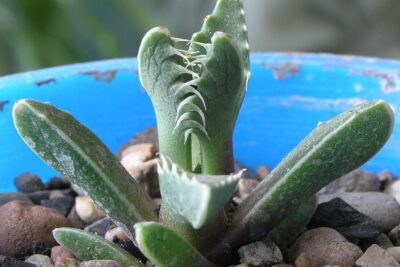

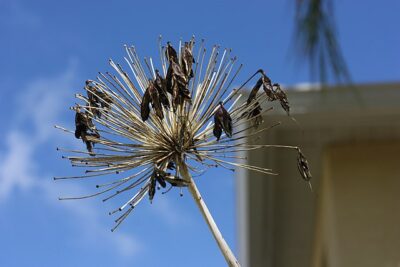

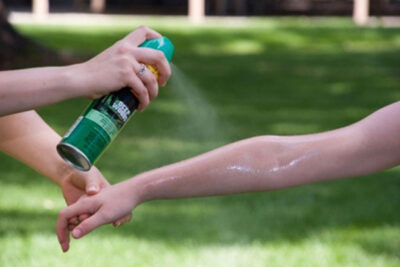
You Must Read